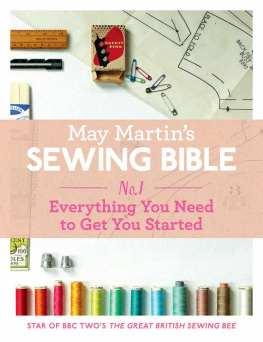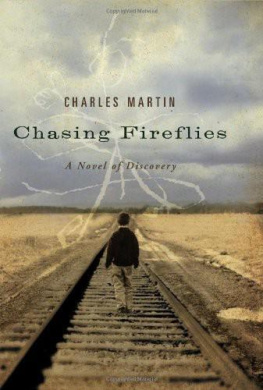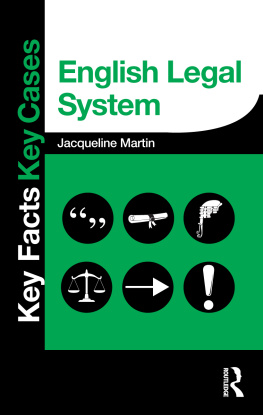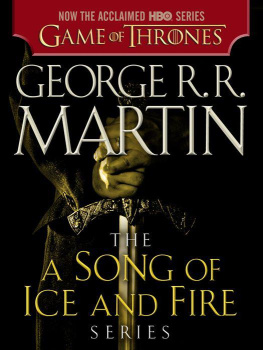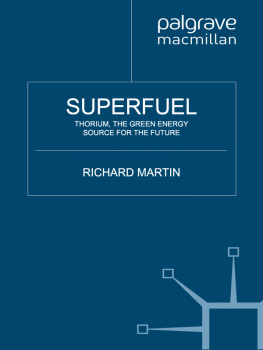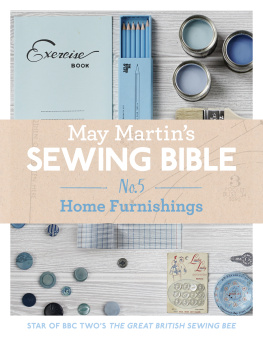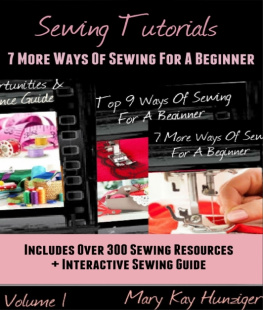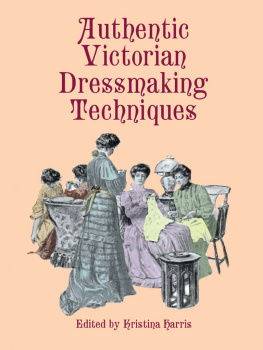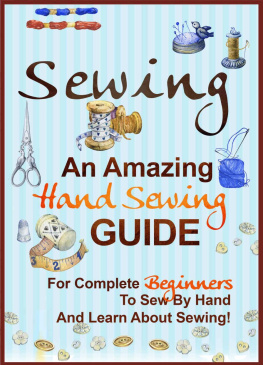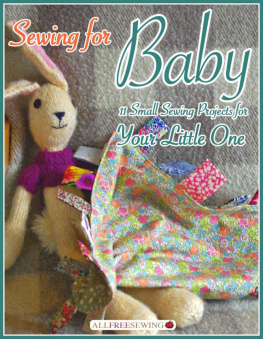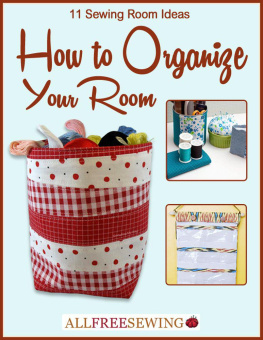Copyright
HarperCollinsPublishers
7785 Fulham Palace Road,
Hammersmith, London W6 8JB
www.harpercollins.co.uk
First published by HarperCollinsPublishers in 2014
FIRST EDITION
May Martin 2014
Cover layout design HarperCollinsPublishers Ltd 2014
Cover photograph Ali Allen 2014
May Martin asserts the moral right to be identified as the author of this work
Every effort has been made to contact the copyright holders but the publishers would be glad to hear of any omissions.
Designer: Lucy Sykes-Thompson
Project Editor: Sarah Hoggett
Copy Editor: Kate Parker
Illustrators: Stephen Dew
Photographer: Ali Allen
Stylist: Alice King
Hair and Make-up Artist: Sarah Matheson
All rights reserved under International and Pan-American Copyright Conventions. By payment of the required fees, you have been granted the nonexclusive, non-transferable right to access and read the text of this e-book on screen. No part of this text may be reproduced, transmitted, downloaded, decompiled, reverse engineered, or stored in or introduced into any information storage retrieval system, in any form or by any means, whether electronic or mechanical, now known or hereinafter invented, without the express written permission of HarperCollins e-books.
Find out about HarperCollins and the environment at www.harpercollins.co.uk/green
Source ISBN: 9780007573042
Ebook Edition JULY 2014 ISBN: 9780007589494
Version: 2014-07-14
Contents
Introduction
I have been a textile tutor for over 40 years and I love my job. I couldnt imagine doing anything more enjoyable. I have a passion for my subject and I love sharing my skills with other people nothing gives me greater pleasure than helping my students and seeing them progress. At school I was not particularly academic, but I discovered that I could sew and I will never forget the sheer delight of completing my first project, a grey pencil skirt. I trained as a needlework teacher and taught at various schools for several years until my children arrived. I branched into adult education because I could fit it around my family, and Ive been teaching students of all ages ever since.
Sewing has become hugely popular again. Ive seen it in the growing numbers of students signing on for classes and in the appeal of TV programmes like The Great British Sewing Bee, for which I had the privilege of being one of the judges. What was striking about the programme was how well the contestants bonded with each other, and this is something that Ive noticed in my own classes. People love to help each other and share their ideas. As a teacher, I find I learn so much from my pupils. Ive even included a few tips in the full book that theyve shown me, such as the technique for double binding the edge of patchwork to make beautiful mitred corners.
In the full book I have tried to gather together some of the tips and tricks Ive learned over the years. Along the way, Ive discovered different methods of tackling particular techniques that make them easier as well as producing a better finish, and my aim is to share some of the tips that my students have found most helpful. Ive begun with the basics where to sew and what equipment youll need and offered advice on the raw materials of a project, from choosing fabric and thread to selecting and laying out a pattern. And Ive presented some of the fundamental techniques that are so important in sewing, from how to make different types of seams and hems to such processes as creating your own binding (really easy if you have the right gadget) and forming magic rouleau loops. At every point, Ive tried to demystify the subject for beginners explaining pattern terms and markings, for instance while at the same time providing ideas for those with more experience to help enhance their sewing knowledge.
In the second part of the full book, Ive presented a range of projects to suit varying degrees of skill and ability beginner, intermediate and more advanced. The skill level is shown at the start of each project. Beginner projects only require straight seams and simple hand stitching; intermediate projects involve curved seams, bound edges and relatively easy fastenings such as drawstrings or centred zips; the more advanced feature facings, interlinings, and matching fabric patterns and may involve assembling several different components. With these Ive tried to give a taste of every type of sewing project you might be tempted to try, from craft work how to make your own bunting or a beautiful puppet theatre, complete with puppets to home furnishings, from a Roman blind to a boxed cushion cover. There are a number of dressmaking projects too, a range of items for both adults and children. These are linked to actual patterns that you can buy and which you will need for the pattern pieces and full assembly instructions but you dont have to be restricted to these. My aim has been to try to bring them alive by focusing on particular techniques such as how to insert an invisible zip or make a smocked panel for a little girls dress which you can add to your repertoire and use again and again in other projects, building your skills all the time.
It is a privilege to be in a position to reach a wider audience and share what Ive learned over the years. It has given me so much pleasure to teach others, helping and guiding them. I hope this book conveys some of that joy so that you in turn will be inspired to begin your own sewing journey.
A Place to Sew & the Equipment you Need
Essentials for your Sewing Space
Once youve identified your sewing space, here are a few basics that Id recommend:
An electric socket for plugging in your sewing machine and an extension lead. The power cables on sewing machines are never long enough!
A good lamp I have an old Anglepoise with a daylight bulb in it invaluable for ensuring you have enough light to work by, and not just on gloomy winter days.
A comfortable chair at just the right height for you while youre seated at the
sewing machine.
A table pasting table, folding table, kitchen table, even an ironing board (see ) for cutting out your fabric.
Clear plastic boxes to store fabrics, threads and haberdashery. I find it invaluable to see instantly where everything is.
Essential Tools
For your basic sewing kit, youll need the following items:
Hand-sewing needles sharps (all-purpose) for hand-sewing, curved needles for craft, crewel (with a long eye) for embroidery. A needle threader is also invaluable.

